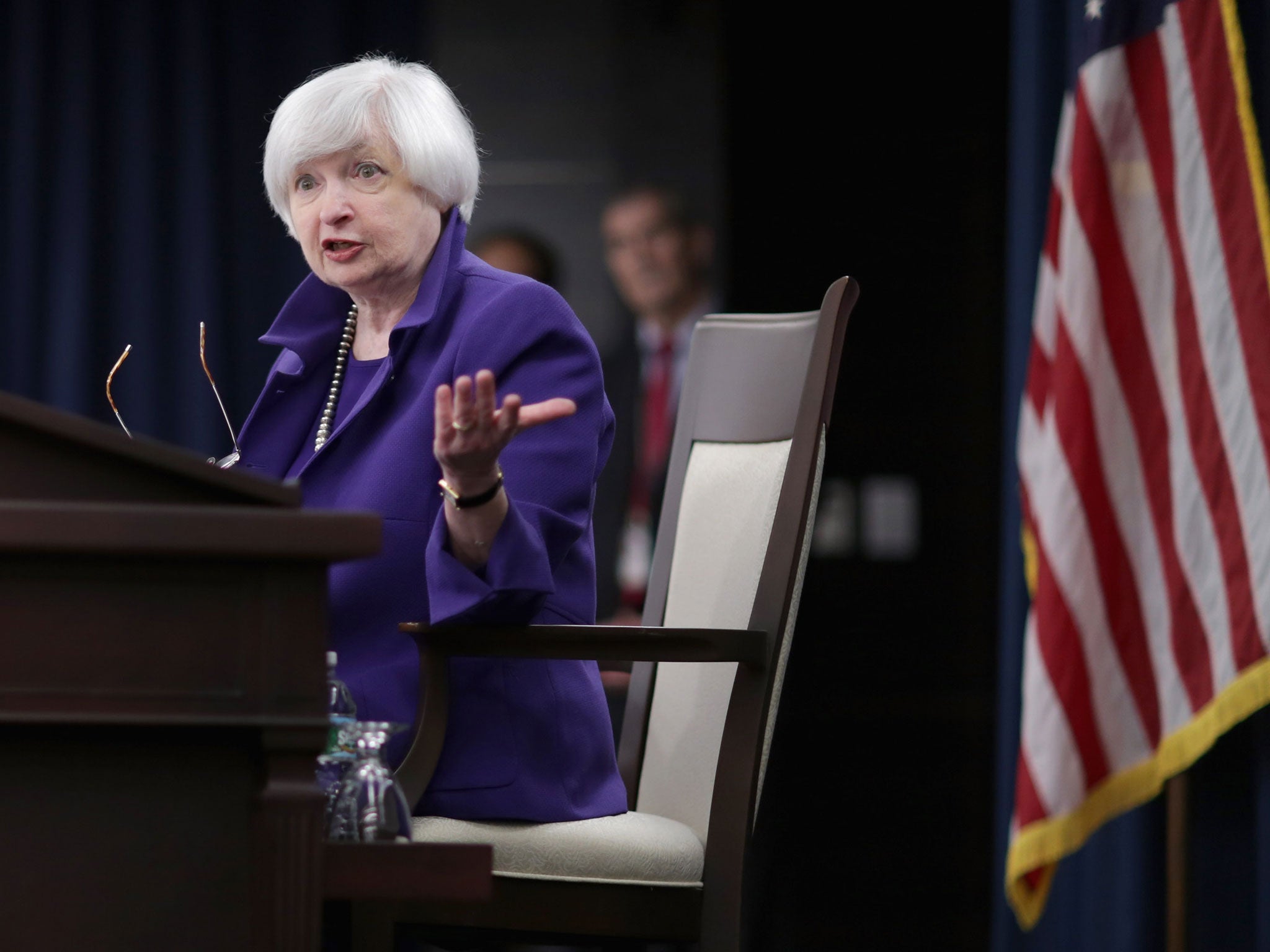The Independent's journalism is supported by our readers. When you purchase through links on our site, we may earn commission.
Look what happened when the Fed raised rates in 1936...
Das Capital: With the economy already in recession, the move contributed to the Great Depression

Last month, the US Federal Reserve delivered a 0.25 per cent rise in interest rates, the first in nearly a decade.
Delivered after more than two years of careful procrastination, the symbolic rise will have a minimal effect on consumption and investment. The focus is now on the trajectory of US monetary policy, and what the central bank means by “gradual” future rises.
The Fed’s forecasts project about four additional rate increases in 2016 and a similar number in 2017. This would mean that US rates would be about 1.375 per cent and 2.375 per cent by the end of 2016 and 2017 respectively. The median estimate for the longer-term Federal Funds rate is about 3.5 per cent. It is far from clear whether the expected increases will, in fact, take place.
Economic activity is patchy. The Fed has elected to accentuate the positive: solid employment growth, strong auto sales and improvements in housing. It is ignoring weak manufacturing, high inventory levels and uncertain consumption. Job creation remains uneven. Employment as percentage of population is about 59 per cent, the same as in the 1980s and well below its peak of 63 per cent. Wage growth is minimal.
The recovery was underpinned, in part, by the domestic energy boom. The retrenchment of invest- ment and employment, driven by low oil prices, will be felt for some time to come. The recovery in house prices is reliant on low rates and faces structural problems. High levels of student debt, limited job opportunities, the need for mobility and a generational change in attitudes to borrowing may limit demand and reduce activity.
The Fed’s preferred inflation measure is well below its 2 per cent target. A stronger dollar (a 10 per cent rise in the dollar reduces core inflation by 0.5 per cent) and lower commodity – especially oil – prices are likely to keep inflation low. US debt levels are high. A 1 per cent rise in rates will increase interest costs by about $400bn (£280bn). Government interest costs will rise by about $180bn, requiring additional public borrowing.
The natural interest rate may be lower than before the financial crisis. Given low growth and current debt levels, the real interest rate may be about 0.5 per cent. When combined with deflationary pressures, the long-term normalised Fed Funds rate may be closer to 2 per cent than 3.5 per cent.
Risk is increasing. The current economic expansion has been in progress for 78 months. It is unclear whether the current tightening of monetary policy will exacerbate the downturn of a business cycle which has already lost momentum.
Financial asset prices are vulnerable to rate increases. Equity markets have tripled in this cycle. Corporate earnings are weakening. Problems in debt markets, especially in high-yield bonds issued by energy companies, are already evident. An external shock such as worsening European or Chinese debt problems cannot be discounted.
The major international concern is emerging markets. A rapid slowing in growth reflects weak export markets, low commodity revenues, high debt levels and unresolved structural weaknesses. Falling local currencies and large capital outflows are likely to expose problems on dollar-denominated debt especially. Higher US rates and a stronger dollar will accentuate the problems. The key concern remains the dollar, which has risen by about 20 per cent in the past year. Further rises in the dollar will affect US competitiveness and exports. With about 40 per cent of S&P 500 revenues generated overseas, it will affect corporate earnings.
The recent history of attempted rate normalisation is troubling. Since the crisis, central banks from the eurozone to Australia and Canada have found it difficult to increase and maintain higher rates.
Ancient history is worse. In 1936, the Fed tightened rates when the economy was already in recession, contributing to the second part of the Great Depression and a 50 per cent collapse in the Dow Jones Industrial Average.
Several Fed Governors have spoken out recently about their ability to implement negative interest rates, contradicting their own rhetoric about gradual normalisation. If the Fed were to have to cut rates, then the effect on their credibility as economic managers and on central banks generally would be to undermine market confidence significantly.
Satyajit Das is a former banker and author whose latest book, 'A Banquet of Consequences', will be released internationally in February
Subscribe to Independent Premium to bookmark this article
Want to bookmark your favourite articles and stories to read or reference later? Start your Independent Premium subscription today.

Join our commenting forum
Join thought-provoking conversations, follow other Independent readers and see their replies